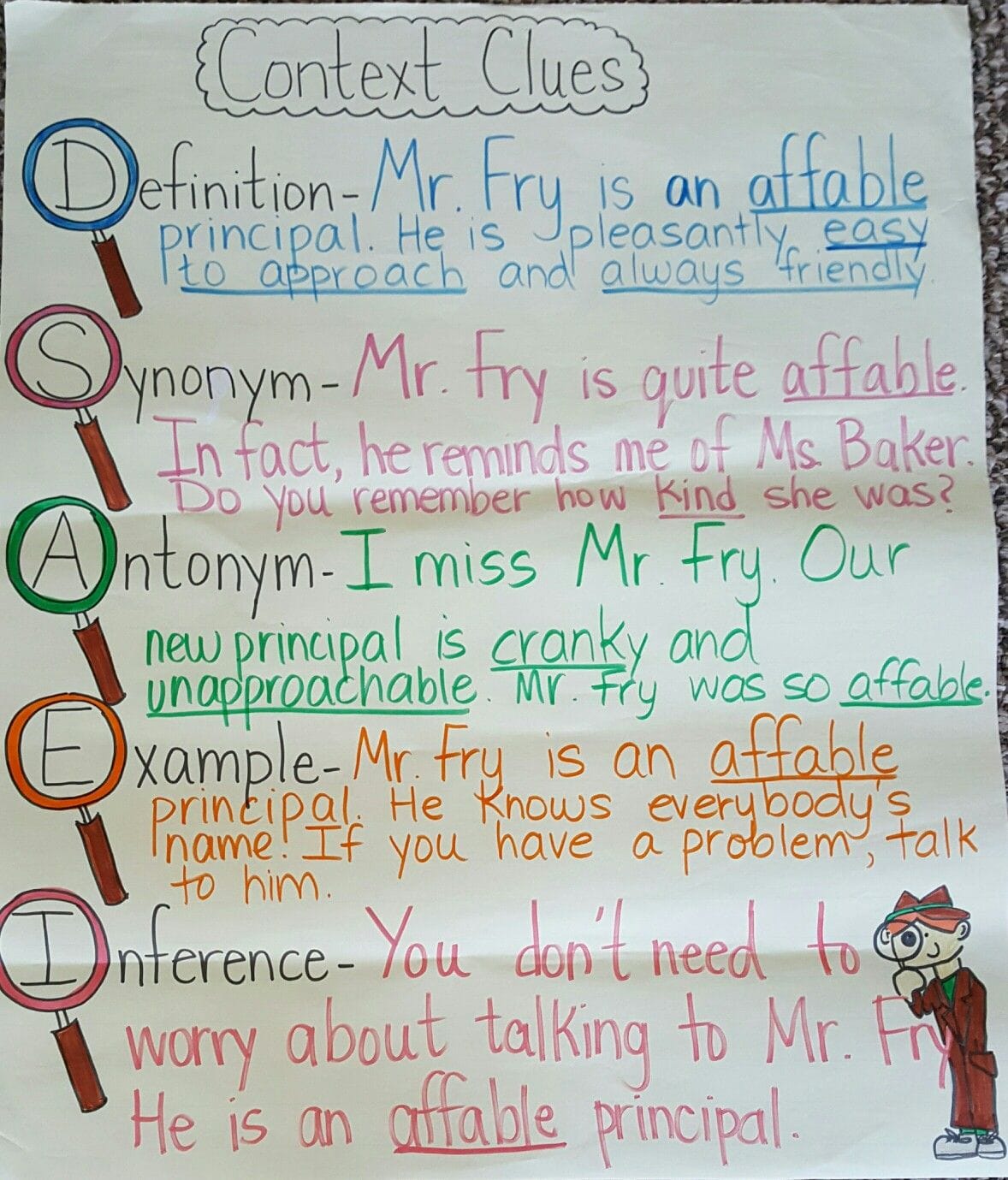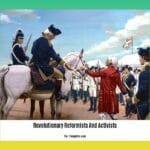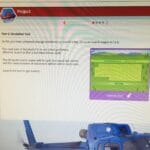Ever see your students stumble over an unfamiliar word while reading? It’s a common roadblock, but context clues can transform them into word detectives. This comprehensive guide will show you how to create engaging anchor charts, implement effective classroom activities, and adapt these strategies for diverse learners. Get ready to empower your students to become reading comprehension superstars!
Creating Effective Context Clues Anchor Charts
Context clues are hints within a text that illuminate the meaning of unknown words, acting like signposts on a reader’s journey. A context clues anchor chart serves as a visual reminder of these helpful strategies. Let’s explore how to build one:
Building Your Anchor Chart: A Step-by-Step Guide
Creating an effective anchor chart is a collaborative and engaging process. Here’s a practical guide:
Define Your Scope: Decide whether your chart will cover all context clue types or focus on specific ones. A general overview introduces the concept, while focused charts allow deeper exploration.
Gather Your Materials: You’ll need chart paper, colorful markers, and examples for each clue type. Adding pictures or stickers enhances visual appeal.
Craft a Catchy Title: Titles like “Context Clues Detectives” or “Unlocking Word Meanings” draw students’ attention.
Define “Context Clues”: Provide a clear, student-friendly definition, such as “Context clues are hints in the text that help us understand the meaning of unknown words.”
Categorize Clue Types: Clearly list each type of context clue with a concise explanation and a memorable example. Use accessible language.
Enhance with Visuals: Visuals are key, especially for younger learners. Use pictures, symbols, and color-coding. A magnifying glass could represent inference clues, for instance.
Engaging Activities: Bringing Your Chart to Life
An anchor chart is more than a visual aid; it’s a springboard for active learning. Here are some engaging activities:
- Word Detective Challenge: Present students with passages containing highlighted unfamiliar words. Using their “detective skills” and the anchor chart, they deduce the meanings.
- Sticky Note Contributions: Students write their own examples of each clue type on sticky notes and add them to the chart, creating a dynamic, evolving resource.
- Context Clues Charades: Students act out words or scenarios; classmates guess the word and identify the type of context clues used.
Adapting for Diverse Learners
To ensure inclusivity, adapt your context clues anchor chart and activities for diverse learning needs:
- Visual Learners: Maximize the use of pictures, diagrams, and color-coding.
- English Language Learners: Provide multilingual examples or use easily translatable words. Visual aids are particularly helpful.
- Students with Learning Differences: Simplify definitions, break down instructions into smaller steps, and provide additional examples and practice opportunities.
Deep Dive into the 5 Context Clue Strategies
Context clues are like secret agents embedded in sentences, ready to help decipher unknown words. Let’s explore the five main types:
1. Definition/Explanation Clues: The “Here’s the Answer” Clue
The text explicitly defines the word. Example: “The loquacious professor, known for his long speeches, lectured for hours.” “Long speeches” defines “loquacious” as talkative.
2. Synonym/Restatement Clues: The “It’s Like This” Clue
Synonyms or similar phrases clarify the unknown word. Example: “The ancient relic was pristine, untouched and in perfect condition.” “Untouched and in perfect condition” restates “pristine.”
3. Antonym/Contrast Clues: The “Opposite Day” Clue
Antonyms reveal meaning through contrast. Words like “but,” “however,” or “unlike” often signal this clue. Example: “Although she was exuberant, her friend remained calm and reserved.” “Calm and reserved” contrasts with “exuberant,” suggesting excitement.
4. Example Clues: The “For Instance” Clue
Specific examples illustrate the word’s meaning. Example: “Nocturnal creatures, such as owls and bats, are active at night.” “Owls and bats” exemplify “nocturnal.”
5. Inference/General Context Clues: The “Detective Work” Clue
Readers deduce meaning based on the overall context. Example: “He felt a pang of nostalgia looking at old photos.” The context suggests “nostalgia” relates to remembering the past. Unravel the thrilling narrative and hidden depths of the game with this insightful amelia quest summary.
Why Context Clue Strategies Matter
These strategies are crucial for becoming a skilled reader. They foster independence, engage the brain, and build vocabulary organically. Context clues empower readers to unlock meaning without constantly resorting to a dictionary.
Context Clue Charts: A Visual Dictionary
Context clue charts visually organize different types of clues, aiding comprehension and recall. They’re versatile tools, suitable for classrooms, individual study, and at-home learning. These charts can be simple lists, interactive diagrams, or anything in between, catering to various learning styles.
Creating Your Own Context Clue Chart
Choose a Focus: Decide whether to cover all five types or focus on a subset.
Gather Materials: You’ll need paper, markers, and examples. Consider stickers or images for visual appeal.
Create a Title: “Context Clues Detectives” or “Unlocking Word Meanings” are engaging options.
Define Context Clues: Provide a clear and concise definition.
Explain Each Clue Type: Include a brief explanation and a clear example for each type. Use different colors and visuals for clarity.
Make it Interactive: Add pockets for practice sentences or create foldable sections with additional examples.
Context Clues in Action
- Sentence Search: Students fill in missing words using context clues.
- Silly Sentences: Students create sentences with made-up words, challenging others to guess meanings based on context.
- Create an Anchor Chart: A visual representation reinforces learning.
Context Clues in the Real World
Context clues are invaluable life skills, useful for understanding news articles, instructions, and even social media posts. They empower readers to navigate the world of language effectively. Some experts suggest that mood and tone can also be considered context clues. Ongoing research may deepen our understanding of how readers utilize these cues.
Context Clues Chart: A Quick Reference
| Clue Type | Definition | Example |
|---|---|---|
| Inference | Inferring meaning based on surrounding text. | The garrulous child, constantly chattering, never seemed to stop talking. |
| Definition | The word’s meaning is stated directly. | A bibliophile, a lover of books, frequents libraries. |
| Example | Meaning is illustrated through specific examples. | Precipitation, such as rain, snow, and sleet, can occur in various forms. |
| Antonym | An opposite word clarifies the unknown word. | Unlike his gregarious friend, he was quiet and introverted. |
| Synonym | A similar word explains the unknown word. | The intrepid explorer, brave and adventurous, embarked on a perilous journey. |
By mastering these five strategies, students become adept at deciphering unfamiliar words, boosting their vocabulary and comprehension skills. While these strategies are highly effective, they are not always definitive. A dictionary may sometimes be necessary, particularly with highly technical terms or ambiguous phrasing. However, prioritizing context clues empowers learners to actively engage with text and develop stronger language skills.
- Guatemala vs. Costa Rica: Plan Your Trip Smartly - April 16, 2025
- Master Types of Pumps: Ultimate Guide to Selection - April 16, 2025
- Unlock Types of Makeup Secrets: Master Any Look Now - April 16, 2025

















1 thought on “Unlocking Reading Comprehension: The Ultimate Guide to Context Clues Anchor Charts & Activities”
Comments are closed.